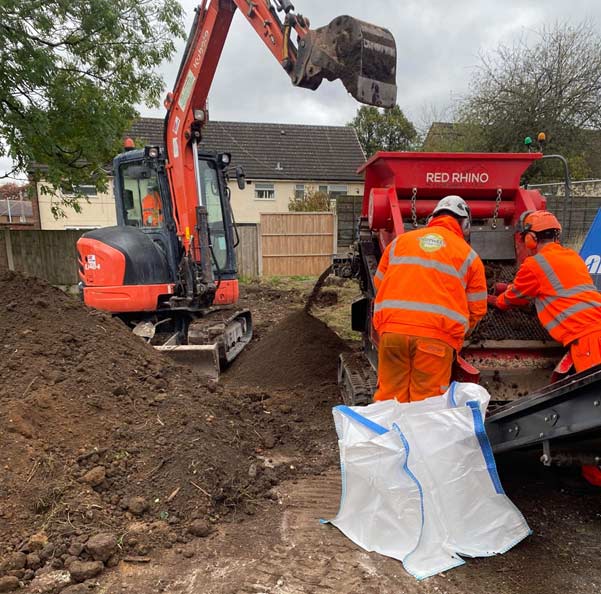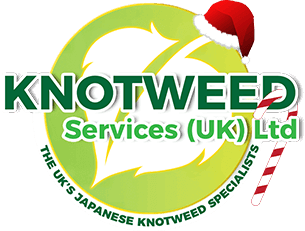JAPANESE KNOTWEED REMOVAL Bridgnorth
6
LIVE KNOTWEED JOBS IN Bridgnorth
8
SUCCESSFUL KNOTWEED REMOVAL PROJECTS IN Bridgnorth
100%
SUCCESSFUL PROPERTY SALES AFTER TREATMENT
1
Bridgnorth BASED KNOTWEED STAFF
NO OTHER JAPANESE KNOTWEED COMPANIES IN Bridgnorth HAVE OUR TRACK RECORD
As one of the most reputable Japanese knotweed removal companies in Bridgnorth, Knotweed Services strives to provide effective treatment services for all weeds that infest your yard.
Knotweed Services is an approved member of the PCA, a government-recognized organization whose members provide the best methods for removing Japanese knotweed.
Our company has removed a number of invasive knotweed plants from large-scale projects in and around Bridgnorth and England. For invasive knotweed removal to be successful, experienced identification, surveying, treatment, and monitoring must take place. We can help.
Japanese Knotweed in Bridgnorth
Japanese knotweed is one of the most aggressive plants in the UK. It spreads quickly and has the potential to damage buildings, homes, and other property. At Knotweed Services, we conduct detailed surveys to detect how invasive your Japanese knotweed is. We provide detailed quotes and plans, giving you an accurate assessment of the situation and recommendations for any necessary action.
If knotweed is found on your land, your project may be delayed until the knotweed infestation is properly handled.
How bad is Japanese Knotweed?
- Knotweed can grow through tarmac and concrete, threatening the structural integrity of buildings.
- Lenders often won’t lend against a building where Japanese Knotweed has been identified.
- Knotweed obstructs both visibility and access to paths, highways and other infrastructure. The plant produces a massive annoyance for commercial properties in particular.
For customers in Bridgnorth with Japanese knotweed, we should be your very first call. We’ll always ensure that the knotweed is removed in its entirety and our warranty guarantees against re-infection and knotweed colonosation.



FREE IDENTIFICATION
Fill in the form below, attach your pictures and we’ll let you know if the plant in your picture is Japanese Knotweed.
Call our professionals now to begin the treatment and control of your infestation in Bridgnorth
Call us on: 0121 725 6348 or 0800 689 4146 for an immediate estimate
From the moment you call Knotweed Services, we'll support you step-by-step through the process.
RESIDENTIAL JAPANESE KNOTWEED REMOVAL Bridgnorth.
WHAT YOU NEED TO KNOW ABOUT JAPANESE KNOTWEED REMOVAL Bridgnorth
Because the size of Japanese Knotweed infestations can vary so widely, it’s not surprising that different methods of Japanese Knotweed removal may be needed. Sometimes one method is sufficient; other times, combinations of methods are best.
As knotweed is a living organism, our technicians are trained to consider all factors affecting the removal process. A dedicated team of experts are on hand to advise you.
— JAPANESE KNOTWEED REMOVAL OPTIONS AVAILABLE IN Bridgnorth

FOLIAR SPRAYING *
Most common treatment. The spraying of powerful chemicals with a knapsack. We ensure that other plants aren’t damaged. The most effective time for foliar spraying to Japanese Knotweed is in Spring.

FOLIAR LEAF WIPING *
With this Japanese knotweed treatment, we use a device to ‘physically wipe’ our chemicals onto the Japanese knotweed leaves. Because this use is so exact, we can often utilise a larger concentration of chemical.

STEM INJECTION
A measured amount of herbicide is applied directly to the invading plant. This is the most ingenious way of elimination because the herbicide is injected straight into the Japanese Knotweed. Not dependant on weather conditions.

BIOMASS REDUCTION
Biomass is a sort of excavation and removal, but instead of excavating all of the soil affected by Japanese Knotweed, we simply remove the afflicted portions. It is an effective method of Japanese Knotweed control that allows for the reuse of the soil. minimising landfill usage.

CROWN REMOVAL
Removing the crown and stem from the equation is an excellent method since they can regenerate, and even small pieces of chopped crown or stem can regenerate and become a new invasive weed.
— COMMERCIAL TREATMENT OPTIONS AVAILABLE IN Bridgnorth

SOIL SCREENING
A tried-and-true methodology used on hundreds of sites throughout the UK
Using the screening method, the Japanese knotweed rhizome material is separated from the soil material. The Japanese knotweed material is then either transported to a licenced landfill at a much lower disposal rate or incinerated on site using a D6 exemption from the Environment Agency or Natural Resources Wales.
The cleaned soils can then be used elsewhere, usually in soft landscaping areas, where they won’t be in the way of building.
This can significantly reduce landfill and backfill costs while also helping to reduce the carbon footprint on site due to fewer vehicle movements to the landfill.

BIOSECURITY SUPERVISION
We can send a biosecurity operator to your property to monitor any excavations or movement of Japanese knotweed-containing soil.
As part of these steps, we can set up a location near the site’s entrance where people can wash their boots and machines. We will supply the primary contractor on site with all toolbox discussions, which will be signed by all contractors involved in the operation.
In situations where biosecurity is necessary, we may provide temporary geotextile barriers.
We will supply the client with a thorough biosecurity report once the service is concluded.
This procedure can be used in conjunction with other on-site treatment methods.

EXCAVATION AND DISPOSAL
This treatment method is ideal where time constraints are present and there’s no other option other than to remove both the Japanese Knotweed and contaminated soil to a registered landfill.
By removing all traces of the infestation quickly, this offers a rapid solution to your problem and allows your commercial project to begin groundwork’s almost straight away. When time is of the essence, there is no quicker Japanese Knotweed removal/treatment method.
Any waste taken off-site will be done so with a licensed waste carrier to a suitably authorised landfill site.

CELL BURIAL
Cell burial comprises of moving Knotweed contaminated soil from one location on site, burying it in an excavated pit which is lined with a root barrier membrane, in a different position on the site.
The burial requirements for Japanese Knotweed are as follows:
- The Environment Agency recommends that the top of the burial cell should be a minimum of 2 metres below ground level.
- The overall depth of the burial pit should be in excess of 5 metres deep. All root barrier seams are welded together forming an encapsulated cell from which the Japanese Knotweed cannot escape. Clean soil is then used to backfill on top of the cell.
- To prevent accidental disturbance of the burial site, it is recorded on all site plans and future land owners should be made aware of the location.

STOCKPILE & TREAT
Bunding is the method of relocating contaminated Japanese Knotweed soil to a different area of the site being treated. A bund is a shallow area of the contaminated soil, typically 0.5m deep.
The purpose of the bund is to move the Japanese Knotweed to an area of the site that is not used. This ‘buys time’ for treatment that would not be possible where the Japanese Knotweed was originally located.
To make the surface flush with the surroundings, the bund can either be lifted, placed on top of the land, or positioned inside an excavation.
For the surface of the bund to be flush with the surroundings, it can be raised, placed on top of the ground, or positioned inside an excavation.

HERBICIDE APPLICATION
At Knotweed Services we can provide the client with bespoke treatment plans depending on the locations of the Japanese knotweed.
These plans can work in conjunction with other methods of treatment where access is limited to pedestrian movements i.e., embankments or existing pathways within a site.
This will normally consist of up to 3 visits per annum to apply herbicide by either foliar spray technique or stem injection during the growing season over a period of 3 years, with a monitoring period of 2 years thereafter.
We would select the appropriate herbicides depending on the surrounding foliage or environmental constraints.
After each visit a full treatment record would be provided with photos showing the progress of the works and then an annual report.
